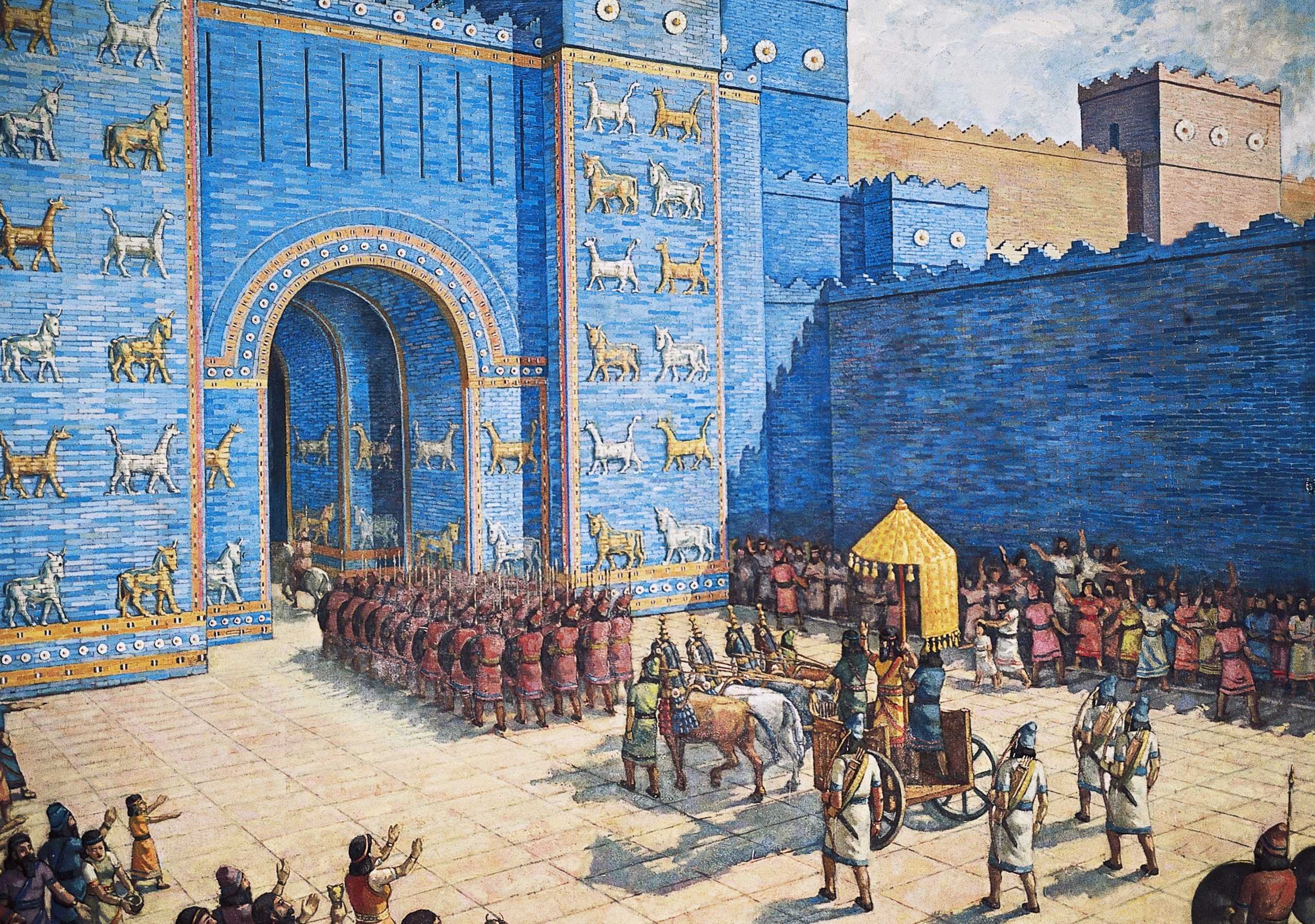Know all about Exciting Mesopotamia’s City-States
Mesopotamia—a historical region of Western Asia situated within the Tigris–Euphrates rivers—housed the world’s first urban civilization with a sophisticated culture that included music, art, and literature. Want to know all about exciting Mesopotamia’s city-states? The Sumerians of lower Mesopotamia founded the first cities, invented writing, developed poetry, and created vast architectural structures. Prehistory was left behind and an era of civilizations started.

How did Sumerians create city-states?
The Sumerians stand out in history as one of the first groups of people to form a civilization. There were five key characteristics that set Sumer apart from earlier human societies: (1) advanced cities, (2) specialized workers, (3) complex institutions, (4) record-keeping, and (5) improved technology.
All the later peoples who lived in this region of the world built upon the innovations of Sumerian civilization.
To know all about exciting Mesopotamia’s city-states we need to back five thousand years ago: by 3000 B.C., the Sumerians had built several cities, each surrounded by fields of barley and wheat. Although these cities shared the same culture, they developed their own governments. Each had its own rulers, and each city and the surrounding land formed a city-state.
A city-state functioned much as an independent country does today. So, Sumerian city-states included Uruk, Kish, Lagash, Umma, and Ur. As in Ur, the center of all Sumerian cities was the walled temple with a ziggurat in the middle. There the priests and rulers appealed to the gods for the well-being of the city-state.

Who controlled power in Sumer’s ealiest goverments?
Sumer’s earliest governments were controlled by the temple priests. The farmers believed that the success of their crops depended upon the blessings of the gods, and the priests acted as go-betweens with the gods.
In addition to being a place of worship, the ziggurat was like a city hall. From the ziggurat, the priests managed the irrigation system. Priests demanded a portion of every farmer’s crop as taxes.
In a time of war, however, the priests did not lead the city. Instead, the men of the city chose a tough fighter who could command the city’s soldiers. At first, a commander’s power ended as soon as the war was over. After 3000 B.C., wars between cities became more and more frequent. Gradually, Sumerian priests and people gave commanders permanent control of standing armies.
In time, some military leaders became full-time rulers. These rulers usually passed their power on to their sons, who eventually passed it on to their own heirs. Such a series of rulers from a single family is called a dynasty. After 2500 B.C., many Sumerian city-states came under the rule of dynasties.

Sumer’s city-states grew prosperous from the surplus food produced on their farms. These surpluses allowed Sumerians to increase long-distance trade, exchanging the extra food and other goods for items they needed.
By 2500 B.C., new cities were arising all over the Fertile Crescent, in what is now Syria, northern Iraq, and Turkey. Sumerians exchanged products and ideas, such as living in cities, with neighboring cultures. This process in which a new idea or a product spreads from one culture to another is called cultural diffusion.
How was the Sumerian culture?
The belief systems, social structure, technology, and arts of the Sumerians reflected their civilization’s triumph over its dry and harsh environment. When we wish to know all about exciting Mesopotamia’s city-states and its culture, religion becomes a key element.
Like many peoples in the Fertile Crescent, the Sumerians believed that many different gods controlled the various forces in nature. The belief in more than one god is called polytheism. To keep the gods happy, the Sumerians built impressive ziggurats for them and offered rich sacrifices of animals, food, and wine.
Sumerians worked hard to earn the gods’ protection in this life. Yet they expected little help from the gods after death. The Sumerians believed that the souls of the dead went to the “land of no return,” a dismal, gloomy place between the earth’s crust and the ancient sea. No joy awaited souls there. A passage in a Sumerian poem describes the fate of dead souls: “Dust is their fare and clay their food.”
Some of the richest accounts of Mesopotamian myths and legends appear in a long poem called the Epic of Gilgamesh.
How was life in Sumerian Society?

With civilization came the beginning of what we call social classes. Kings, landholders, and priests made up the highest level in Sumerian society. Wealthy merchants ranked next. The vast majority of ordinary Sumerian people worked with their hands in fields and workshops. At the lowest level of Sumerian society were the slaves. Some slaves were foreigners who had been captured in war.
Social class affected the lives of both men and women. Sumerian women could work as merchants, farmers, or artisans. They could hold property in their own names. Women could also join the priesthood. Some upper-class women did learn to read and write, though Sumer’s written records mention few female scribes. However, Sumerian women had more rights than women in many later civilizations.
How was Sumerian Science and Technology?
Historians believe that Sumerians invented the wheel, the sail, and the plow and that they were among the first to use bronze. Many new ideas and inventions arose from the Sumerians’ practical needs.

Arithmetic and geometry: To erect city walls and buildings, plan irrigation systems, and survey flooded fields, Sumerians needed arithmetic and geometry. Then, they developed a number system in base 60, from which stem the modern units for measuring time (60 seconds = 1 minute) and the 360 degrees of a circle.
Architectural innovations: Arches, columns, ramps, and the pyramid-shaped the design of the ziggurat and permanently influenced Mesopotamian civilization.
Cuneiform Sumerians created a system of writing. One of the first known maps was made on a clay tablet in about 2300 B.C. Other tablets contain some of the oldest written records of scientific investigations in the areas of astronomy, chemistry, and medicine.
Keep on reading to deep dive into Exciting Mesopotamia’s Geography, Exciting Mesopotamia’s City-States, Exciting Mesopotamia’s Empires and also watch “Introducing Mesopotamia, Cradle of Civilization Video” !

Just for fun
- Play the Game of Ur online against a computer
- Find out about rebus puzzles and how they were inspired by Sumerian writing
- Read a story from the Epic of Gilgamesh
- Become an archaeologist and dig for virtual Mesopotamian artifacts in Iraq, then curate a museum exhibition using photographs of the artifacts you found
- See your name in cuneiform writing
- Read some Sumerian proverbs to understand that the people who lived in ancient Mesopotamia are very similar to us!
- The world’s oldest playable board game, the Game of Ur, is an ancient Sumerian race game. It dates from about 2500BC and was uncovered in a tomb in the royal cemetery at Ur in southern Iraq. You can see it yourself on display in the British Museum or watch a YouTube video showing the famous British Museum curator Irving Finkel playing the game with YouTuber and TV presenter, Tom Scott. You can even buy a replica of the Game of Ur to play at home!
- Can you solve a Sumerian mystery? Read the story of the Royal Tomb of Ur
- Complete a quiz about the civilization of the ancient Mesopotamia
Find out more about Ancient Mesopotamia
- The British Museum’s Mesopotamia website is packed with information and images
- A children’s guide to Mesopotamia from DKfindout!
- Find out more about Mesopotamia’s rich legacy in BBC guides
- Watch a video about the secrets of ancient Mesopotamia and find out about the clay “envelopes” the Sumerians used
- Sumer facts for kids from the Kiddle Encyclopedia
- Download information packs about Ancient Sumer (archaeology, history, food, writing, mythology)
- Discover more about the development of cuneiform writing
- The cuneiform script was the world’s first written language: find out more about deciphering it
- See images of key objects from Sumer and Mesopotamian life in British Museum learning guides
- Listen to an audio description of one of the oldest writing tablets in the world
- Read about ziggurat temples and the excavations of the ziggurat of Ur
- Information about the White Temple and ziggurat at Uruk
- The Mesopotamians developed agriculture, language, cities, religion, and government
See for yourself!
- See Mesopotamian archaeological site photography
- Find out more about the world of a scribe in Sumer
- Explore the royal tombs of Ur
- Examine the Standard of Ur and listen to a BBC program about it
- Look at a cuneiform writing tablet covered with accounting writing and pictures
- See a slideshow of archaeological artifacts from the royal tombs at Ur or a collection of photographs of Ur artifacts in the British Museum
- Examine artifacts online, including an ancient pull-toy, a clay tablet, and a cylinder seal
- The Sumerian city-states art in the Louvre Museum in Paris, France
- See an animated map of Ancient Sumer and of the Sumerian city-states



Comments are closed